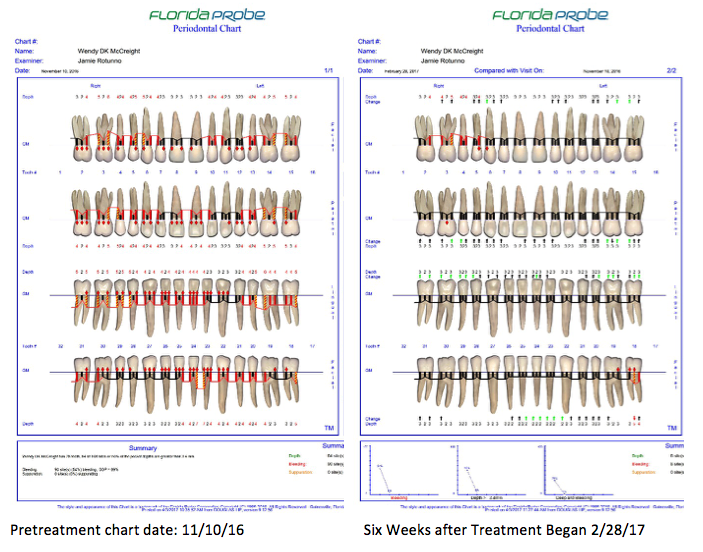
Patients who are anxious about dental care often ignore early signs and symptoms of gum disease, like bleeding gums and bad breath, because the gums don’t hurt yet. When the disease advances to the point of discomfort, it is harder to ignore. The patient in this case study came to McCreight Progressive Dentistry complaining that it hurt to brush his teeth and to eat. He assumed he had a cavity, but Dr. McCreight diagnosed periodontal disease.
Hygienist Jamie Rotunno addressed his concerns by carefully explaining his periodontal charting and ideal treatment steps, the first of which included bacterial testing and prescription tray delivery of medication to fight the infections. Reducing infection and inflammation before scalings, she explained, should make the entire treatment more comfortable. He agreed.
The patient exhibited generalized periodontal disease, with moderate to heavy bleeding, calculus, and pockets measuring up to 7mm (normal is 1-3mm). Bone surrounding his teeth had begun to break down and bacterial testing indicated high levels of pathogens. Treatment started with the prescription Perio Tray® to reduce the bacterial loads and inflammation. After two-weeks of tray usage, four deep cleanings in the office were completed. The prescription tray homecare continued two times a day for 15 minutes between hygiene visits.
Six weeks after the cleanings were completed, the patient returned to the office. Rotunno documented significant improvement throughout the mouth. Bleeding decreased from 90 sites to 6 sites. Deep pockets dropped from 84 sites to 8. The remaining measurements were within normal limits. Healthy stippled tissue was observed and pathogen testing indicated a reduction in bacterial loads in every category tested. Three months later at a maintenance visit, the healthy results had been maintained.






